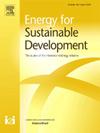How China's transport sector responds to carbon neutrality target: A study from a multi-model comparison analysis
IF 4.4
2区 工程技术
Q2 ENERGY & FUELS
引用次数: 0
Abstract
China has proposed the goal of achieving carbon neutrality by 2060. As a key emission unit, the transport sector is receiving more attention for its low-carbon transformation path. Due to the diversity of models and parameters, the core conclusions of existing studies are not entirely consistent. Based on the IPCC AR6 database, a framework for comparison analysis of multiple models is established to explore the existence of different results. It is used to evaluate the changes in low-carbon transition pathways, drivers and potential risks to the transport sector in the context of carbon neutrality. The results show that towards carbon neutrality, China's transport sector needs to accelerate the development of the railroad system, with different fuel substitution measures for passenger and freight transport. Electricity and hydrogen will become the main sources of energy in the transport sector, but increasing the proportion of hydrogen energy may lead to a reduction in energy efficiency. The low-carbon transition of the transport sector was influenced by the path of China's carbon-neutral system. Fuel substitution will provide a more pronounced boost than other measures when more transportation emissions reductions are needed. However, as the power sector gradually shifts to renewable energy sources, mainly wind and photovoltaics, it could present a potential risk of uncertainty for transportation energy use. On this basis, the study provides meaningful policy implications for the low-carbon transformation of China's transport sector.
求助全文
约1分钟内获得全文
求助全文
来源期刊

Energy for Sustainable Development
ENERGY & FUELS-ENERGY & FUELS
CiteScore
8.10
自引率
9.10%
发文量
187
审稿时长
6-12 weeks
期刊介绍:
Published on behalf of the International Energy Initiative, Energy for Sustainable Development is the journal for decision makers, managers, consultants, policy makers, planners and researchers in both government and non-government organizations. It publishes original research and reviews about energy in developing countries, sustainable development, energy resources, technologies, policies and interactions.
 求助内容:
求助内容: 应助结果提醒方式:
应助结果提醒方式:


